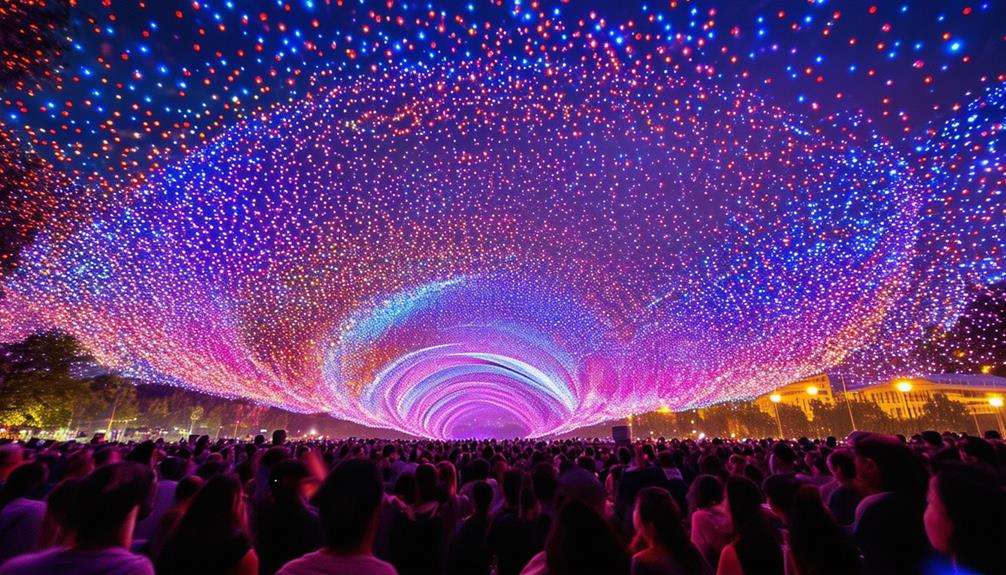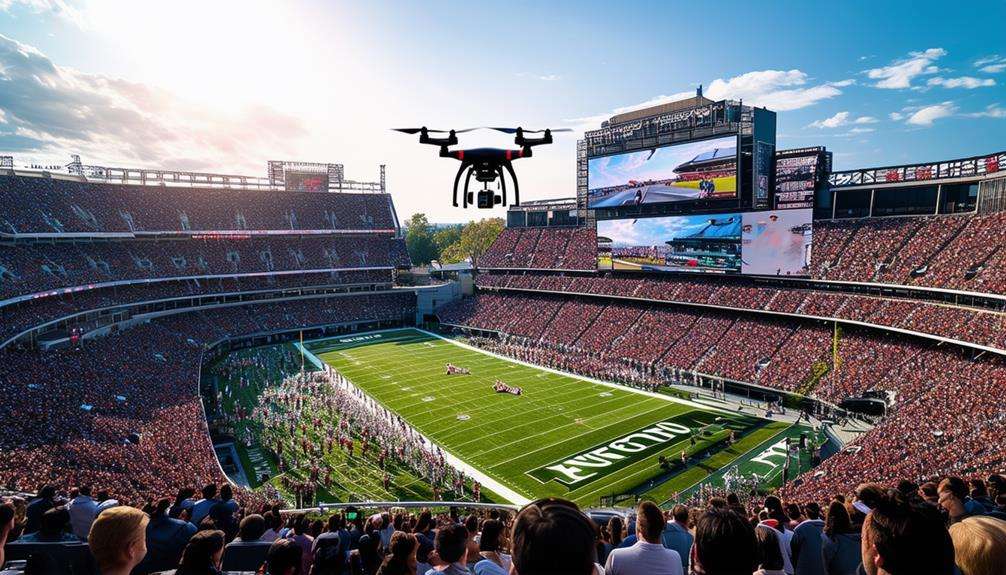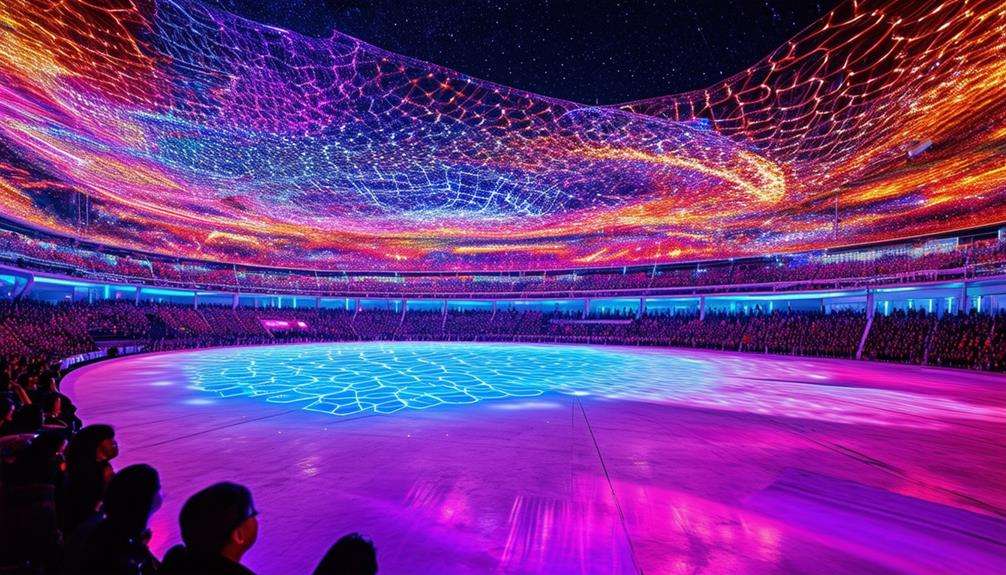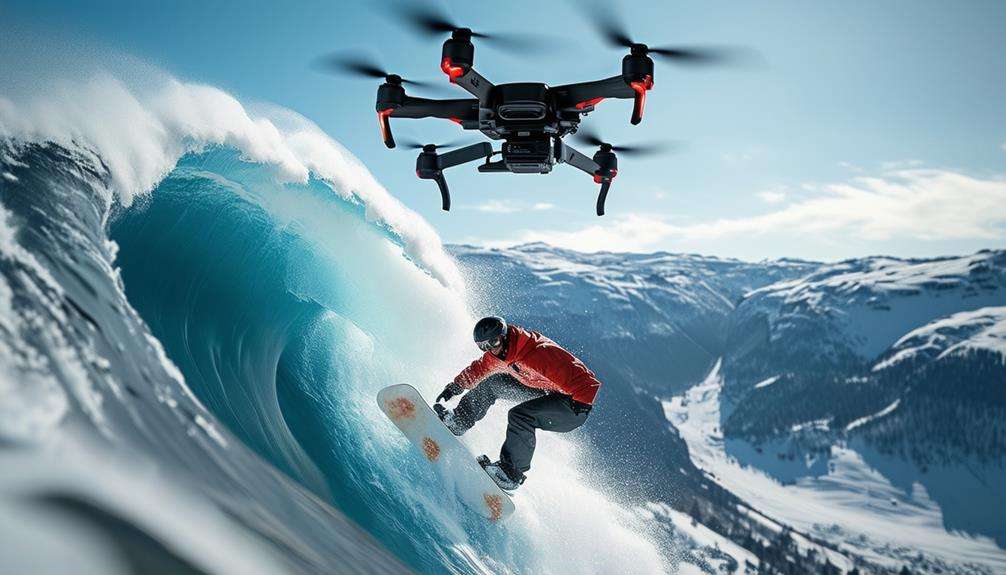Creating Stunning Aerial Shots for Movies With Drones
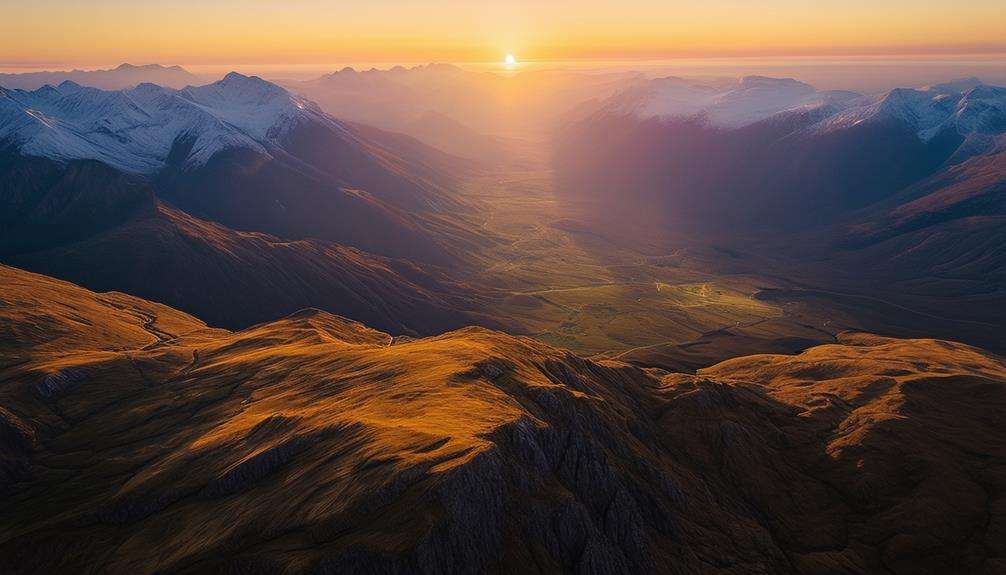
When aiming to create stunning aerial shots for movies with drones, understanding the key equipment is your initial step. High-resolution cameras with stabilization and quality gimbals are essential, but they're only part of the equation. Mastery of fundamental cinematography techniques, such as flight patterns and manual control, is crucial for capturing smooth, breathtaking footage.
Consistent practice and experimentation can significantly enhance your results. However, achieving cinematic excellence involves more than just flying a drone. Post-production techniques and legal considerations also play vital roles in the process.
Essential Equipment
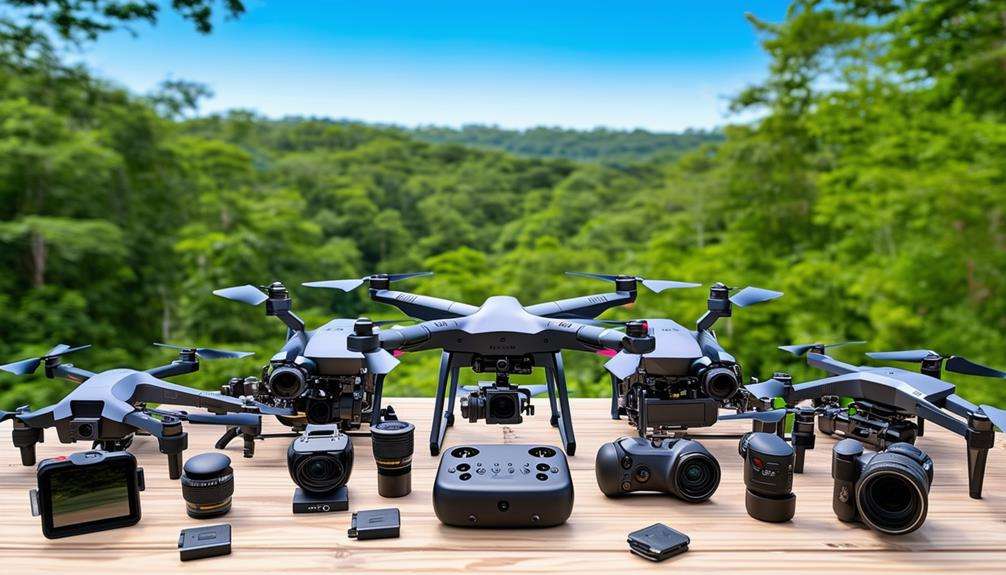
When selecting a drone for stunning aerial shots, prioritize camera resolution, stabilization, and flight performance. High-resolution cameras are essential for capturing sharp, detailed footage; aim for at least 4K resolution to meet professional standards. A quality gimbal is crucial as it stabilizes the camera, reducing shakiness and delivering smooth, cinematic shots.
Flight performance is equally important. Opt for drones with longer flight times to capture extended scenes without frequent interruptions. Advanced GPS features enhance control and precision, enabling more complex maneuvers and stable hovering, which are vital for professional cinematography.
Mastering camera settings such as shutter speed, aperture, ISO, and white balance is also crucial. These settings allow you to adapt to different lighting conditions and achieve the desired aesthetic for your shots. Additionally, consider investing in accessories like ND filters to control exposure, extra batteries to extend filming sessions, and protective cases to safeguard your equipment.
Basic Cinematography Techniques
Mastering basic cinematography techniques can elevate your aerial shots from ordinary to breathtaking, making your footage truly stand out. Begin by understanding different flight patterns such as orbiting, tracking, and reveal shots. These dynamic camera movements add depth and interest to your scenes.
Establishing shots, which set the scene for your story, benefit greatly from smooth, controlled movements. Utilizing gimbals can help achieve this smoothness, as can flying in calm conditions and practicing manual control.
Composition is crucial for visually appealing shots. Apply the Rule of Thirds to place your subject off-center, creating a more balanced and natural look. Leading lines guide the viewer's eye through the frame, while foreground interest adds depth and context.
Experiment with advanced techniques like the parallax effect, where the background and foreground move at different speeds, and the dolly zoom, which creates a striking sense of perspective.
Lighting is another key element. Shooting during the golden hour, the period shortly after sunrise or before sunset, provides soft, diffused light that enhances the cinematic quality of your footage. Don't forget post-production techniques like color grading to further enhance your aerial shots.
Improving Your Skills
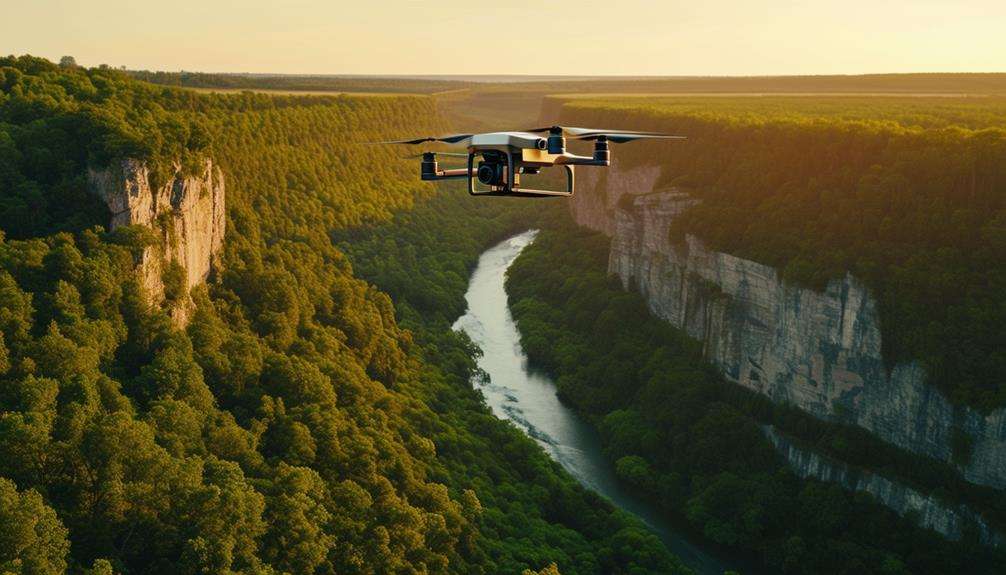
Building on your foundational cinematography techniques, focus on honing your skills through consistent practice and experimentation. Mastering various cinematic drone movements such as push-ins, pull-outs, tracking shots, aerial pans, and parallax effects will significantly enhance your ability to create visually stunning aerial shots. These movements introduce dynamic elements to your footage, boosting its visual appeal.
Experimenting with different camera angles, compositions, and lighting conditions is crucial. Capture scenes from unique perspectives to determine what best conveys the story you're telling. The right combination of these elements can transform ordinary shots into exceptional ones. Additionally, shooting during different times of the day will help you understand how natural light influences your scenes.
To further elevate your cinematic drone footage, utilize editing tools for color grading, adding effects, and enhancing sound. These post-production techniques can make a significant difference in the final output, ensuring that your aerial shots aren't only engaging but also professionally polished.
Advanced Techniques
Having honed your basic skills, it's time to master advanced techniques like dynamic flight paths and cinematic camera angles. Experiment with parallax effects and dolly zooms to create unique and memorable shots. Incorporating intricate movements and perspectives can elevate your aerial footage to new heights, ensuring your work stands out.
Dynamic Flight Paths
Enhance your drone cinematography by mastering advanced flight paths that add dynamic and engaging elements to your aerial shots. Techniques like the parallax effect and dolly zoom create depth and intrigue.
The parallax effect involves moving your drone in one direction while keeping the camera fixed on a subject, making the background shift intriguingly. Tracking shots smoothly follow subjects from above, capturing dynamic movements that keep the audience engaged.
Experimenting with manual orbiting can also elevate your footage. Orbiting around a subject while maintaining a consistent distance and altitude introduces a dramatic, cinematic feel. Combining these techniques results in visually captivating sequences that are hard to achieve through traditional filming methods.
Here are three advanced flight paths you should try:
- Parallax Effect: Move your drone laterally while keeping the camera locked on the subject to create depth and movement.
- Tracking Shots: Follow your subject smoothly from the air, capturing dynamic movements with precision.
- Manual Orbiting: Circle around your subject at a consistent speed and distance for a dramatic, rotating perspective.
Cinematic Camera Angles
Mastering dynamic flight paths is just the beginning; leveraging advanced camera angles can elevate your drone cinematography to new cinematic heights. By utilizing diverse cinematic camera angles, you can add depth and emotional impact to your aerial shots. Techniques like low-angle shots, high-angle shots, and Dutch angles each offer a unique perspective and dramatic effect.
Experiment with dynamic camera movements such as crane shots, whip pans, and dolly zooms to bring your scenes to life. Combining these techniques with unique perspectives such as top-down shots and vertical tracking shots can forge a compelling visual narrative.
| Technique | Description |
|---|---|
| Low-Angle Shots | Creates a sense of power or awe by filming from below. |
| High-Angle Shots | Provides an overview, making subjects appear smaller. |
| Dutch Angles | Adds tension by tilting the camera diagonally. |
| Vertical Tracking Shots | Moves the camera vertically, adding dynamic movement. |
Incorporate unconventional angles like overhead shots and canted angles for creative flair. Mastering the combination of multiple camera angles and movements ensures your aerial shots are visually engaging and immersive. By exploring these techniques, you'll enhance your drone cinematography, capturing breathtaking and professional-quality footage.
Post-Production Tips
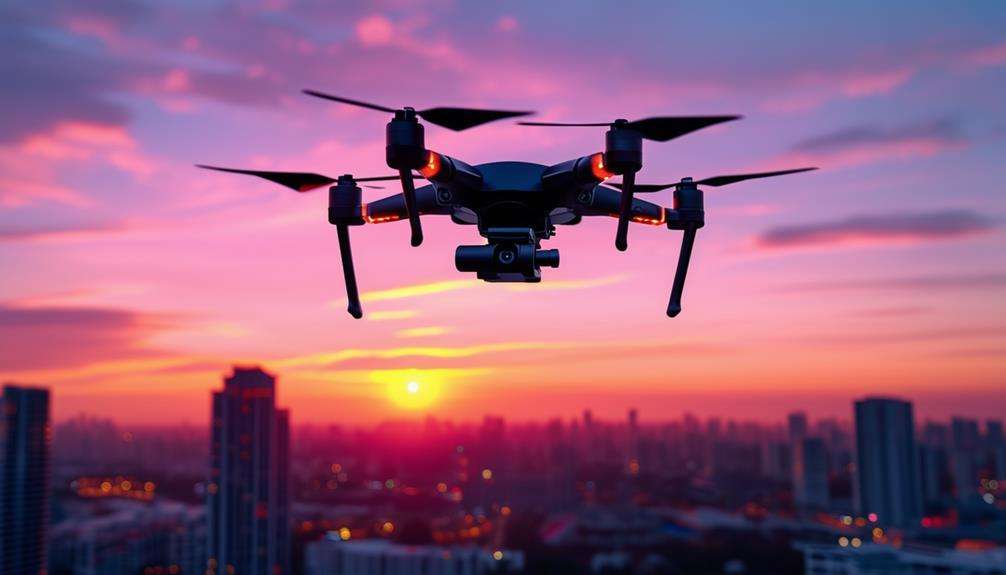
In post-production, applying consistent color grading techniques can significantly enhance the visual appeal and mood of your aerial shots. By adjusting the colors to match the tone of your film, you can create a cohesive and visually stunning experience for your audience.
Additionally, incorporating music and sound effects can amplify the emotional impact of your drone footage. The right soundtrack can transform your visuals, making them more engaging and memorable. To ensure your aerial shots flow seamlessly, experiment with connection effects and smooth cuts. This will contribute to a professional and polished final product.
Here are three key tips to guide you through post-production:
- Color Grading: Utilize tools like Adobe Premiere Pro or DaVinci Resolve to adjust the color balance, contrast, and saturation of your footage. This will help you achieve a consistent look across all your shots.
- Music and Sound Effects: Select a soundtrack that complements your visuals. Subtle sound effects can also add depth and realism to your aerial shots.
- Connection Effects: Implement transitions like crossfades or dissolves to link your shots smoothly. This will enhance the overall flow and continuity of your film.
Legal and Safety Considerations
When operating drones for movie shoots, ensure you have a certified drone license to comply with legal regulations. Always check for flight restrictions in your area to avoid fines and ensure safety. Maintain clear communication with your team about safety protocols to prevent accidents and maintain control during shoots.
Licensing Requirements
To legally operate a drone for commercial purposes, you must obtain a certified drone license under the FAA's Part 107 regulations. This certification ensures that you meet all the necessary licensing requirements, keeping you compliant with legal standards and emphasizing safety—a critical aspect when using drones for film production.
When starting your drone cinematography venture, follow these essential steps:
- Study for the Part 107 Exam: The FAA's test covers various topics, including airspace regulations, weather conditions, and emergency procedures. A thorough understanding of these areas is crucial to passing the exam.
- Register Your Drone: Every commercially used drone must be registered with the FAA, a non-negotiable step in the compliance process.
- Prioritize Safety: Always prioritize safety by avoiding shoots in adverse weather conditions like high winds. Clearly communicate your flight plans and safety measures with directors or clients.
Flight Restrictions
Understanding flight restrictions is crucial for ensuring the legality and safety of your drone cinematography projects. Knowing the regulations governing drone usage can save you from hefty fines and potential legal issues. To operate commercially, you'll need a certified drone license. This certification ensures you're aware of critical flight restrictions, such as no-fly zones around airports and other sensitive areas.
Adhering to regulations also means respecting altitude limits, typically set at 400 feet above ground level. Violating these boundaries can endanger other air traffic and result in severe penalties. Therefore, always check local aviation authority websites or apps for updated airspace maps before any shoot.
Safety should be your top priority. If conditions are too windy to maintain control of your drone, cancel the shoot to ensure both footage quality and safety. Communicating these safety protocols to directors or clients will help them understand the constraints you must work within.
Safety Protocols
Safety protocols are essential for legal compliance and the effective execution of drone shoots. They safeguard equipment and crew while ensuring adherence to the law.
Consider the following steps:
- Get Certified: Obtain a commercial drone license. This certification guarantees you understand and comply with local laws and safety standards, which is crucial for legal and responsible drone operation.
- Plan Your Flights: Develop detailed flight plans. Communicate with directors or clients to align on safety protocols, flight paths, and shot requirements. This coordination prevents misunderstandings and ensures everyone is informed about safety measures.
- Monitor Conditions: Always check weather conditions before a shoot. Avoid flying in windy conditions, as strong winds can compromise drone stability and control. If the weather is unfavorable, reschedule to prevent accidents.
Beginner Tips
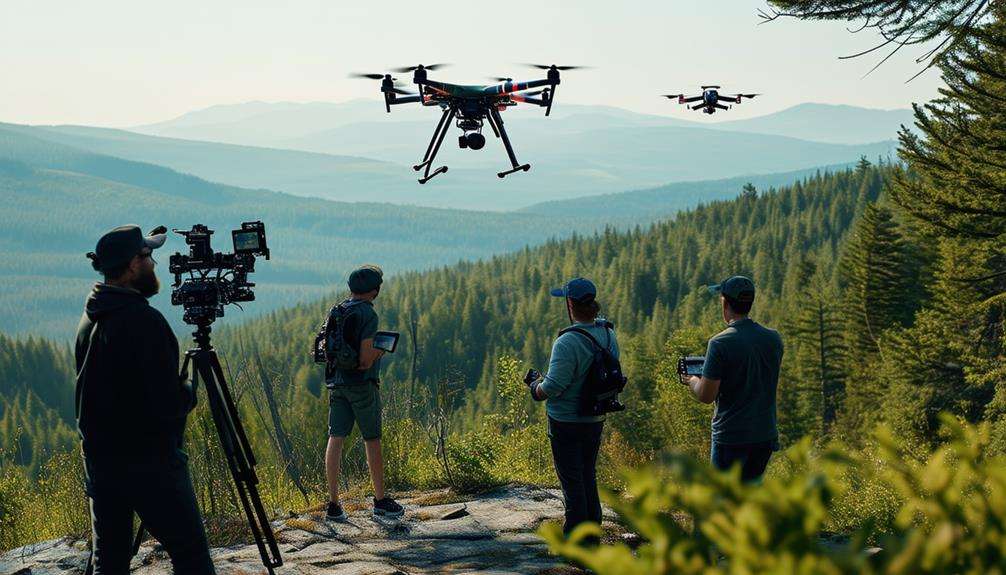
When starting with drone cinematography, opt for a user-friendly drone equipped with GPS and obstacle avoidance features. These enhancements significantly improve the quality of your footage and allow you to concentrate on learning to pilot without excessive worry about crashes.
Practice in open spaces, away from trees, buildings, and other obstacles. This helps build your confidence and hone your piloting skills. Focus on mastering basic maneuvers like hovering, ascending, descending, and turning. These foundational skills are crucial for capturing smooth, stable footage, essential in drone cinematography.
Experiment with various camera settings and modes to understand their impact on the quality of your aerial shots. Adjust resolution, frame rate, and exposure settings to find the optimal combination for your projects. Consistent practice will enhance your ability to create stunning visuals.
Industry Applications
Drones have significantly transformed various industries by offering the capability to capture stunning aerial footage, thus opening new avenues for creativity and efficiency.
Film and Television
In the film and television industry, drones have revolutionized storytelling. They enable filmmakers to capture unique aerial shots, providing mesmerizing views of landscapes, dynamic action scenes, and visually enthralling sequences. This technology allows for creative boundary-pushing, immersing audiences in ways that were previously unimaginable.
Real Estate Marketing
In real estate marketing, drones provide a comprehensive view of properties and their surroundings. Potential buyers can now experience a property from an aerial perspective, seeing the layout, neighborhood, and nearby amenities in a single, visually captivating shot. This enriched viewing experience helps properties stand out in a competitive market.
Tourism and Hospitality
The tourism and hospitality sector benefits immensely from drone technology. By showcasing destinations and attractions through stunning aerial footage, these industries can inspire travelers and entice them to explore new places. Drones create visually engaging content that highlights the beauty and excitement of various locations, making promotional materials more compelling.
Key Industry Applications of Drones
- Film and Television: Enhancing storytelling with dynamic aerial shots.
- Real Estate Marketing: Providing comprehensive property views.
- Tourism and Hospitality: Creating visually captivating destination showcases.
Embrace drone technology to elevate visual content in your industry!
Professional Development
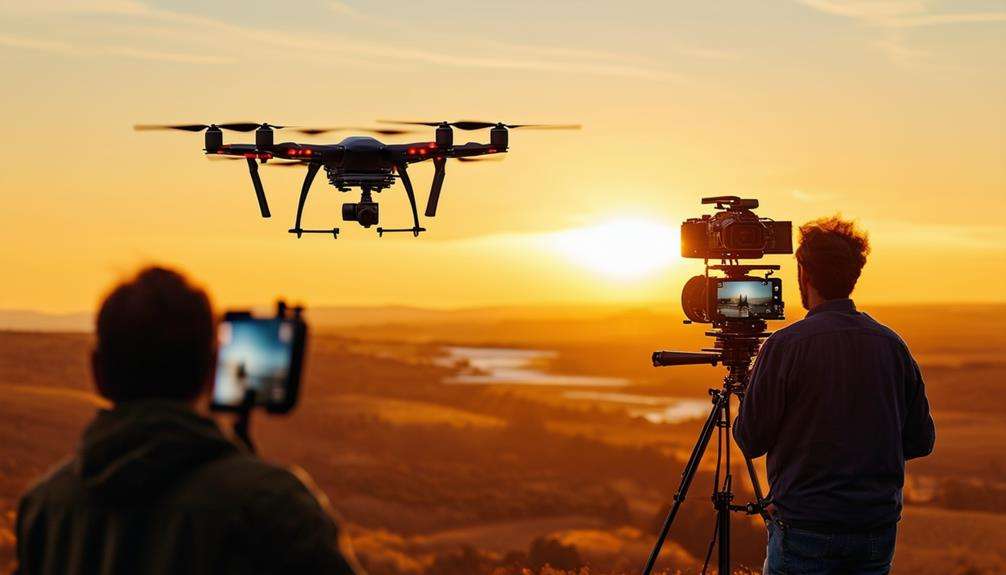
Building a career in drone cinematography requires a combination of formal education, practical experience, and ongoing learning. Begin with a solid educational foundation, either through traditional film schools or specialized online courses. These programs provide essential technical knowledge and creative skills for producing high-quality aerial footage.
Hands-on experience is crucial. Familiarize yourself with industry-standard equipment to enhance your drone cinematography skills. Working with advanced drones and camera setups will prepare you for real-world scenarios. Enroll in aerial photography courses that cover everything from basic drone operation to advanced cinematography techniques to master the craft.
Collaboration is also vital for professional growth. Work with filmmakers to develop both your technical and interpersonal skills. Effective teamwork will make you a more versatile and sought-after professional.
Conclusion
By mastering essential equipment, honing both fundamental and advanced techniques, and committing to continuous improvement, you're well on your way to capturing stunning aerial shots for movies.
Remember the importance of post-production, legal considerations, and ongoing professional development. Experiment, practice, and push creative boundaries to elevate your drone cinematography. With dedication and passion, you'll create breathtaking visuals that offer unique perspectives and immersive experiences for your audience. Now, get out there and start filming!

